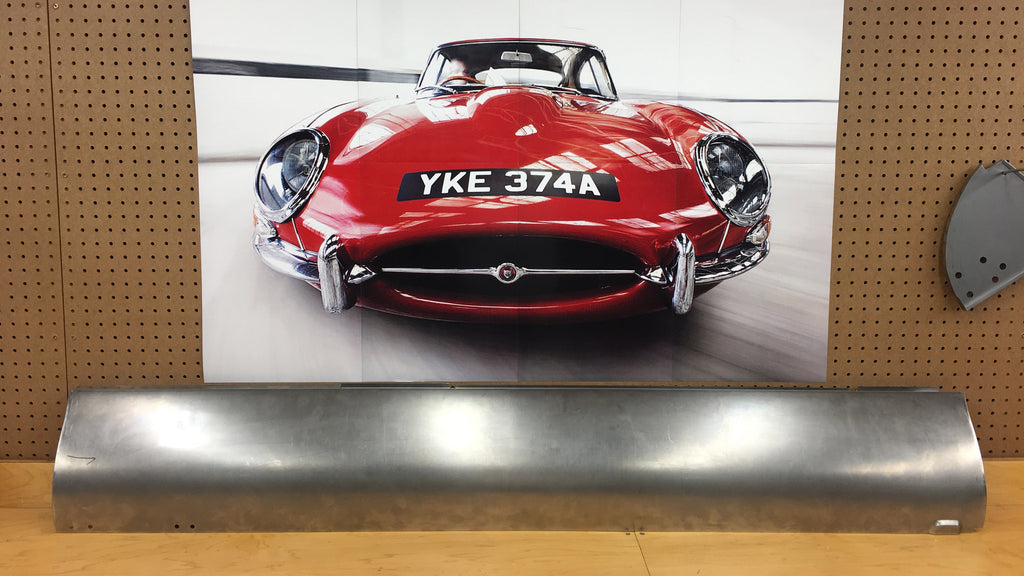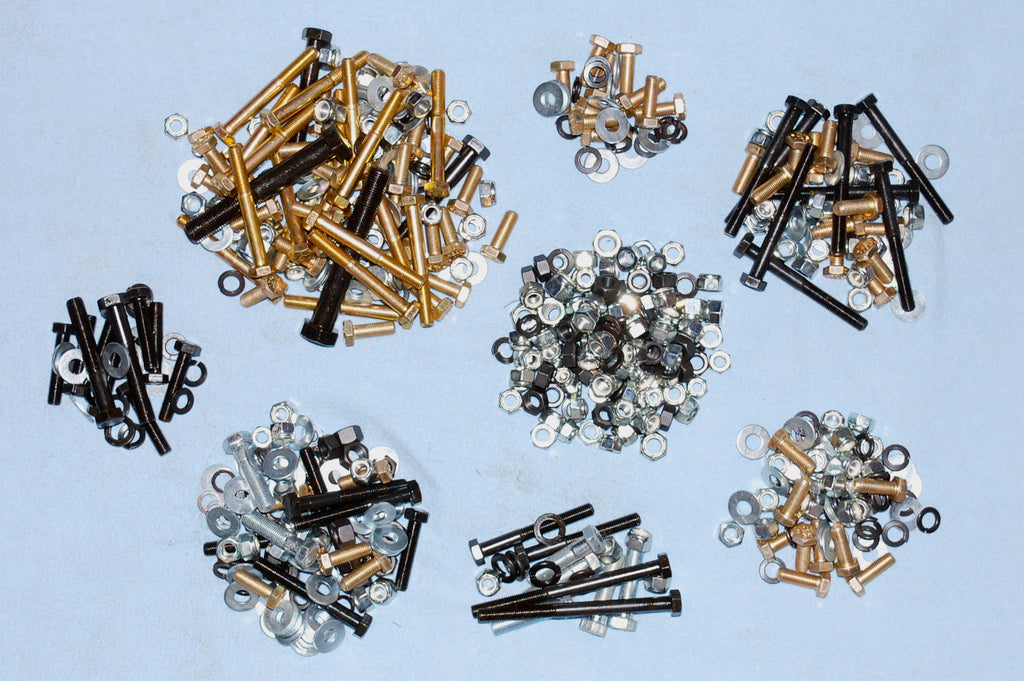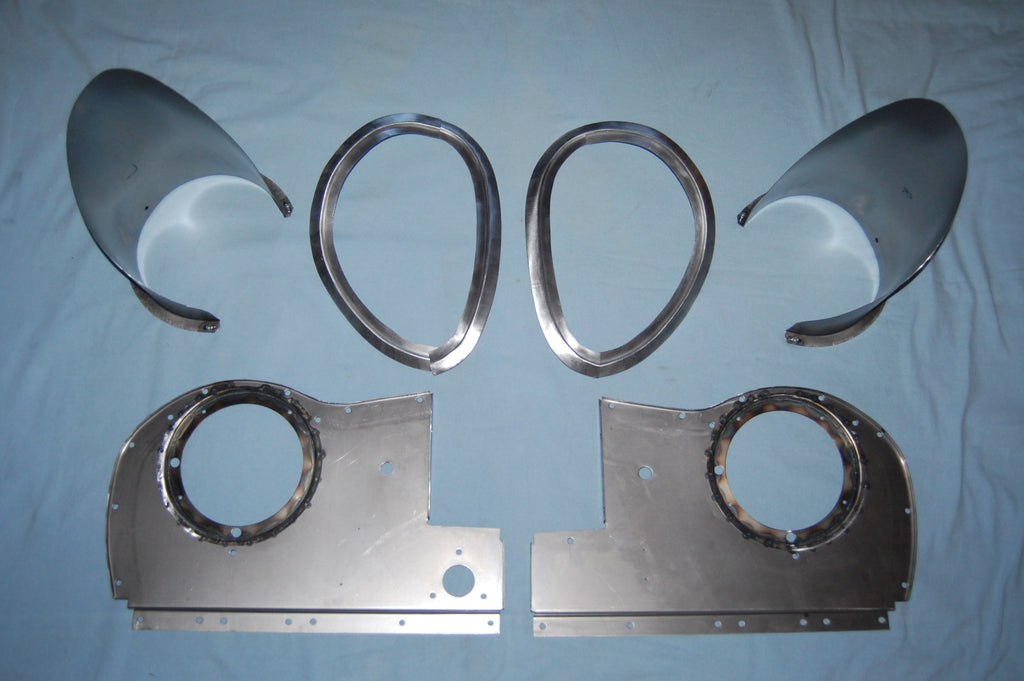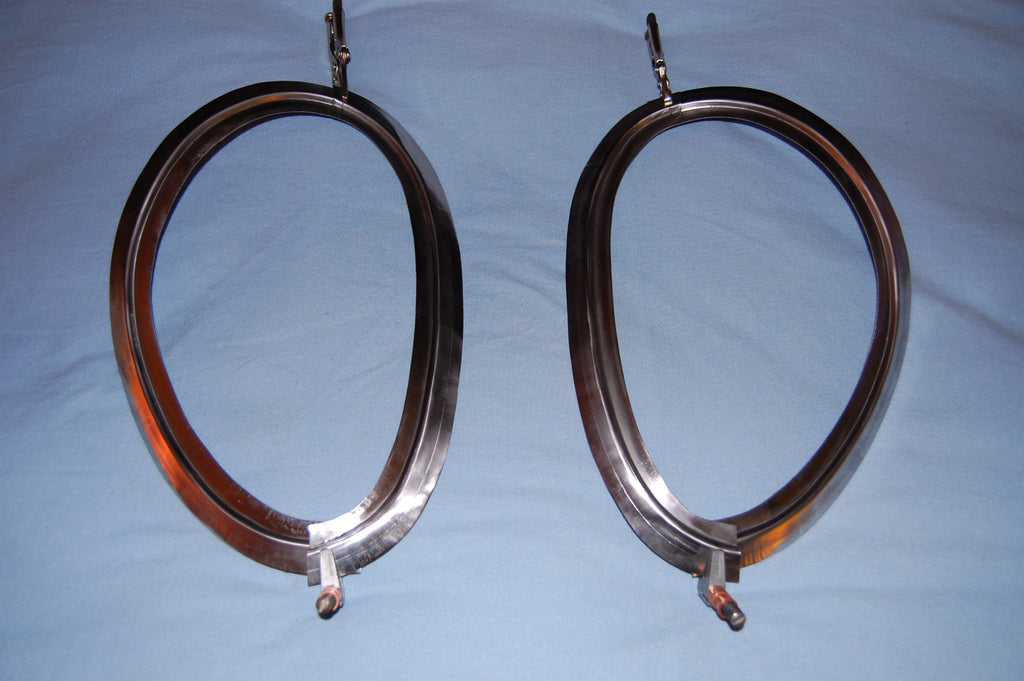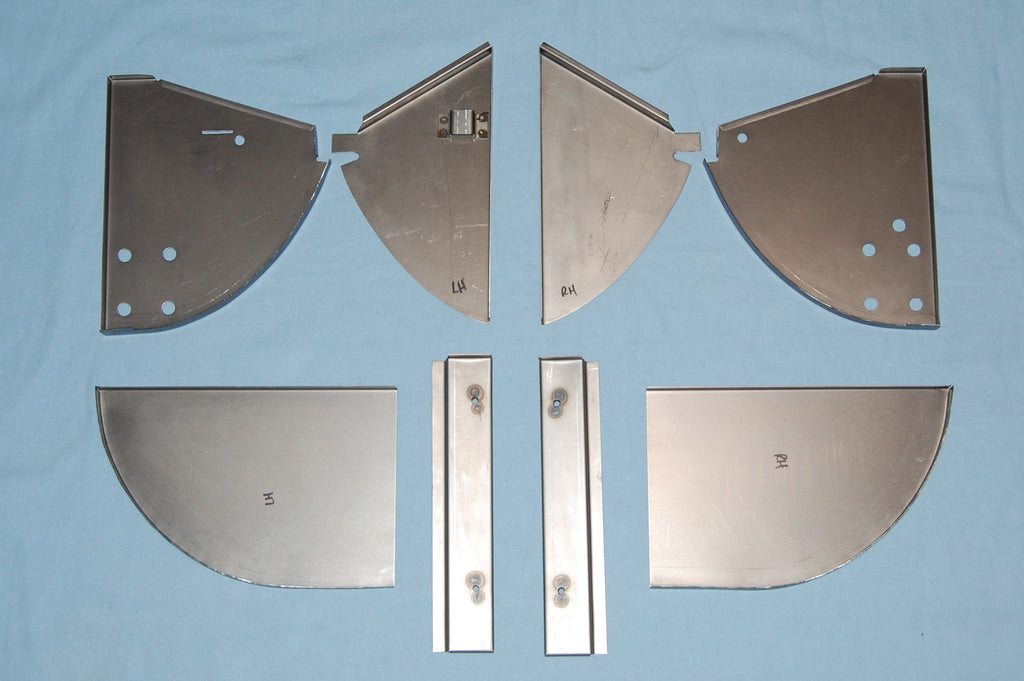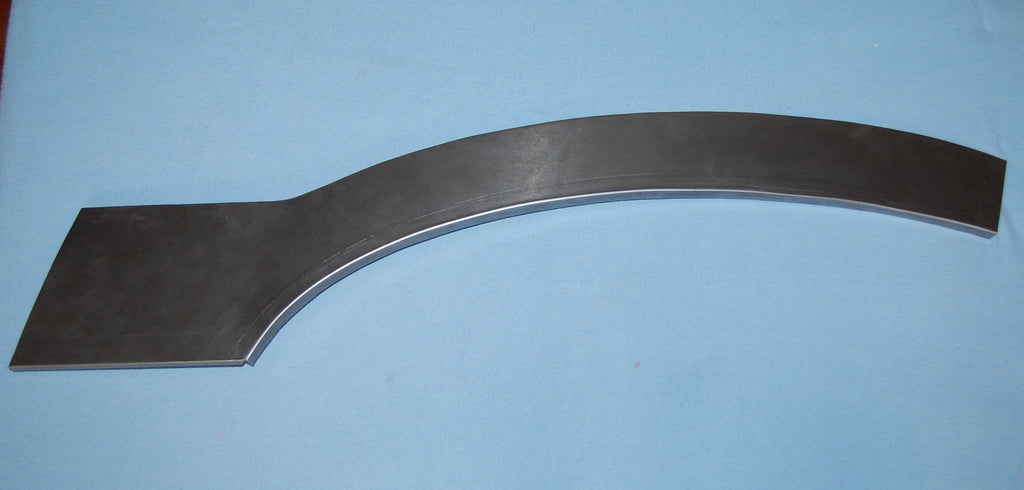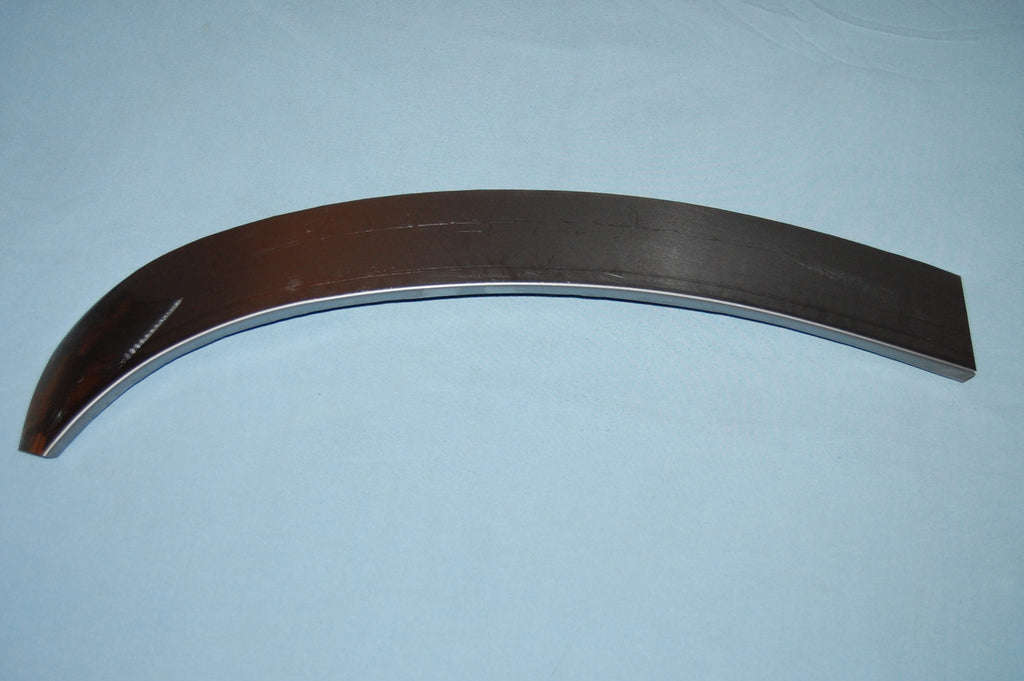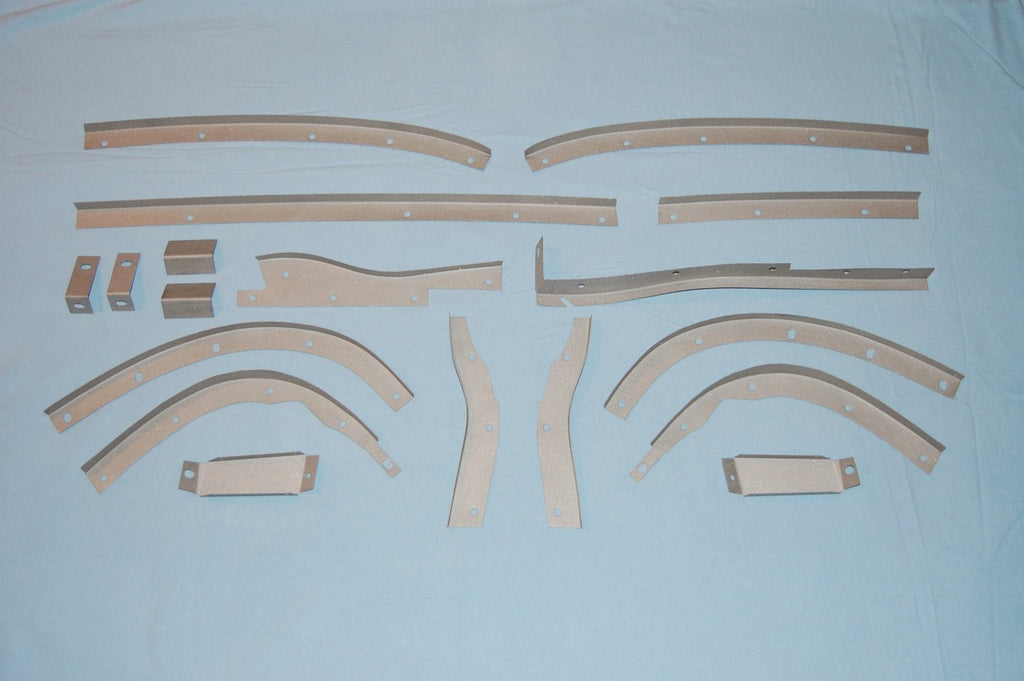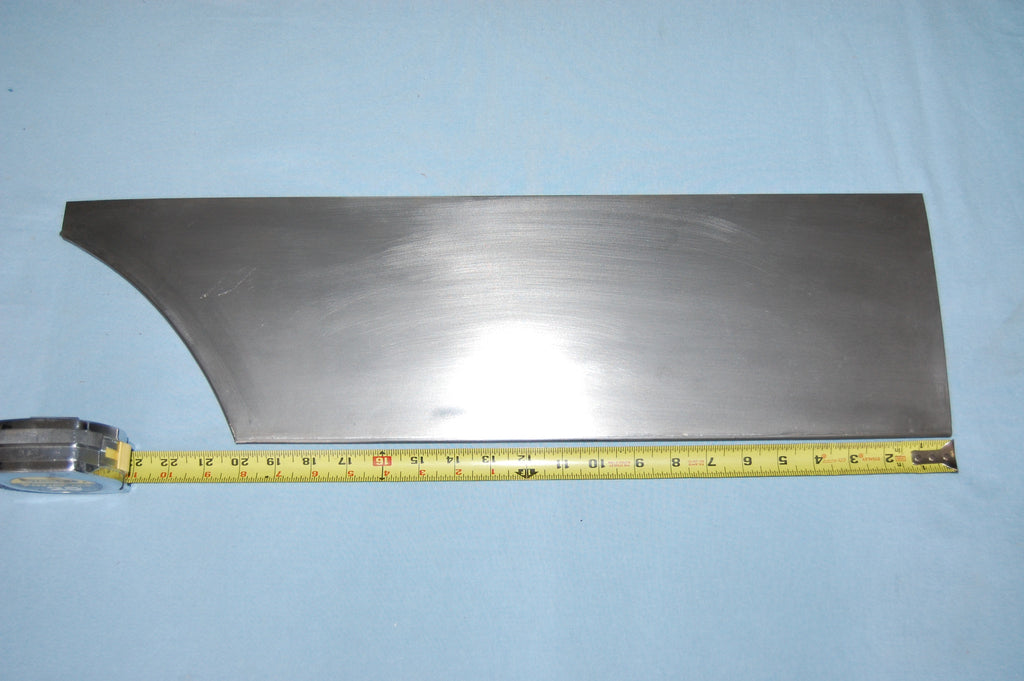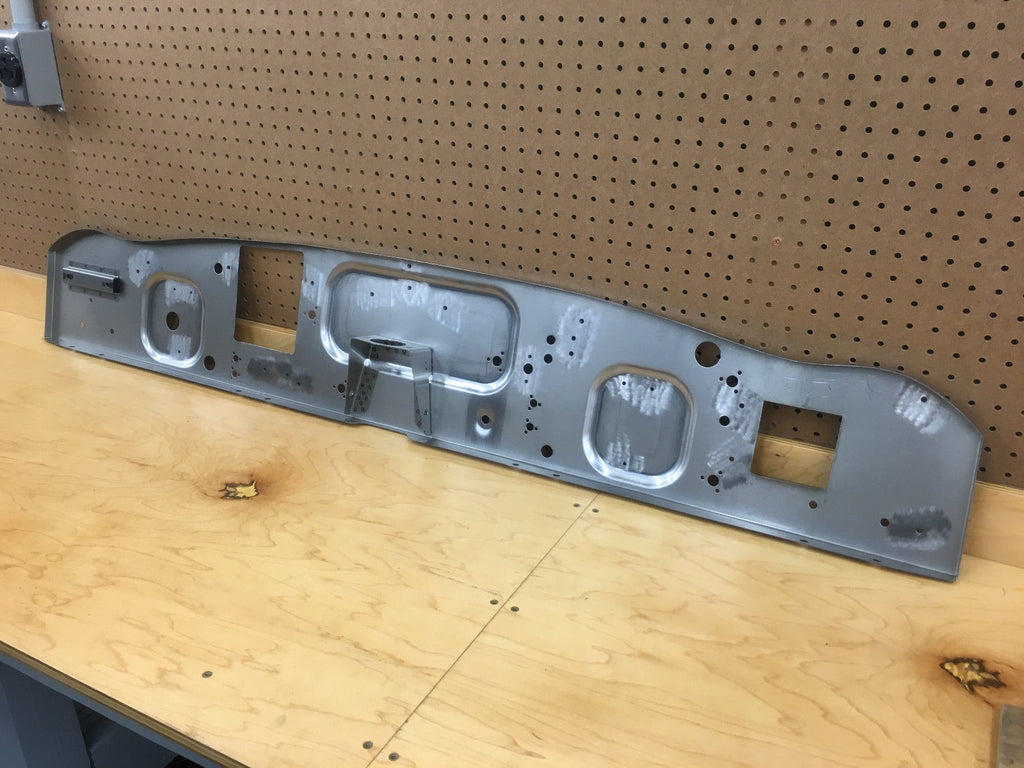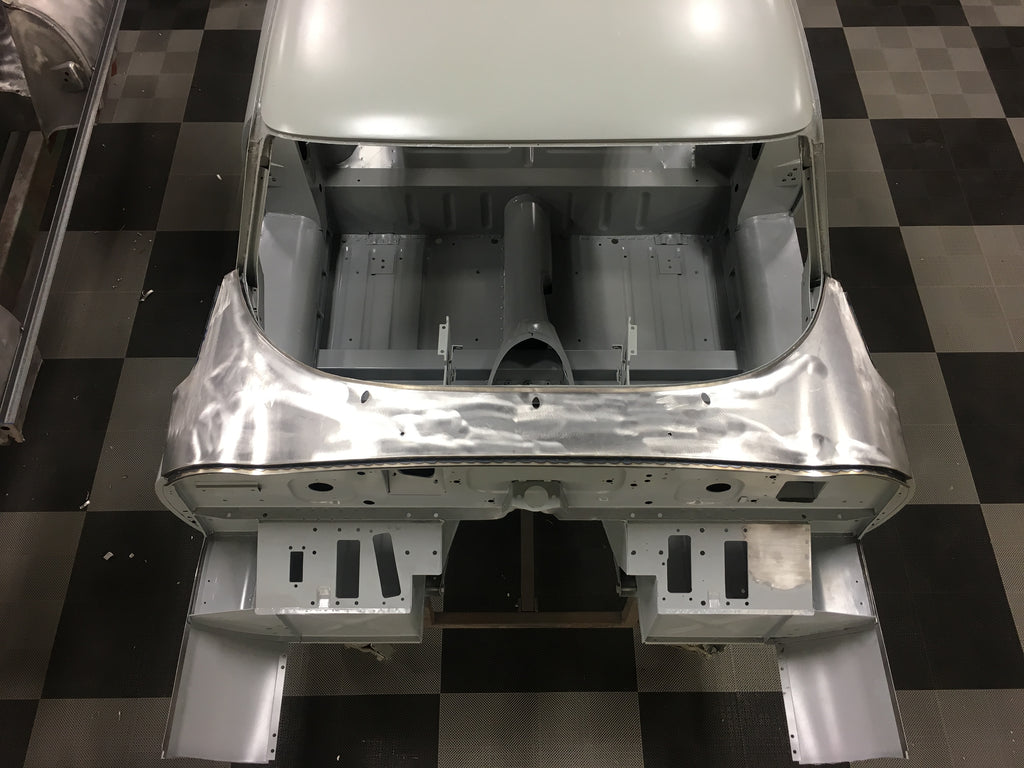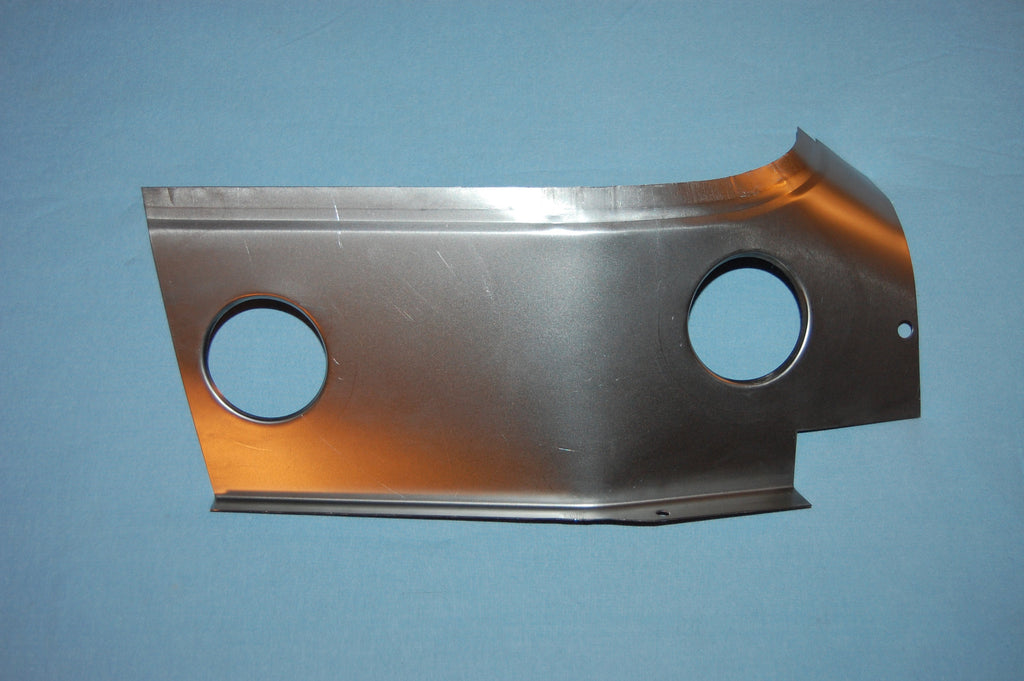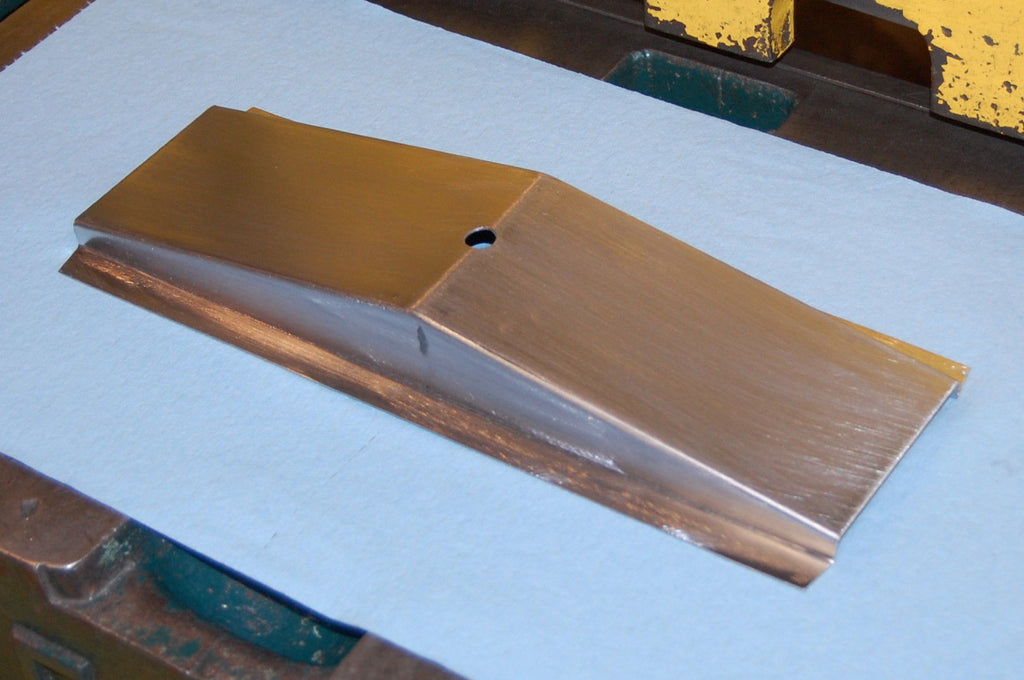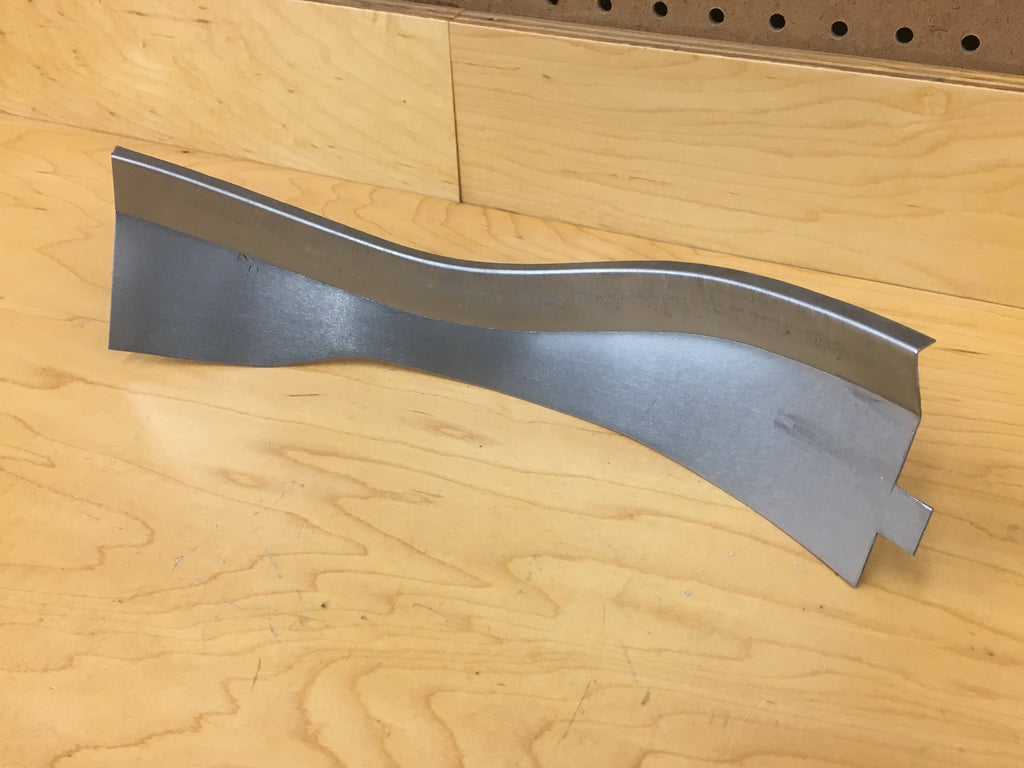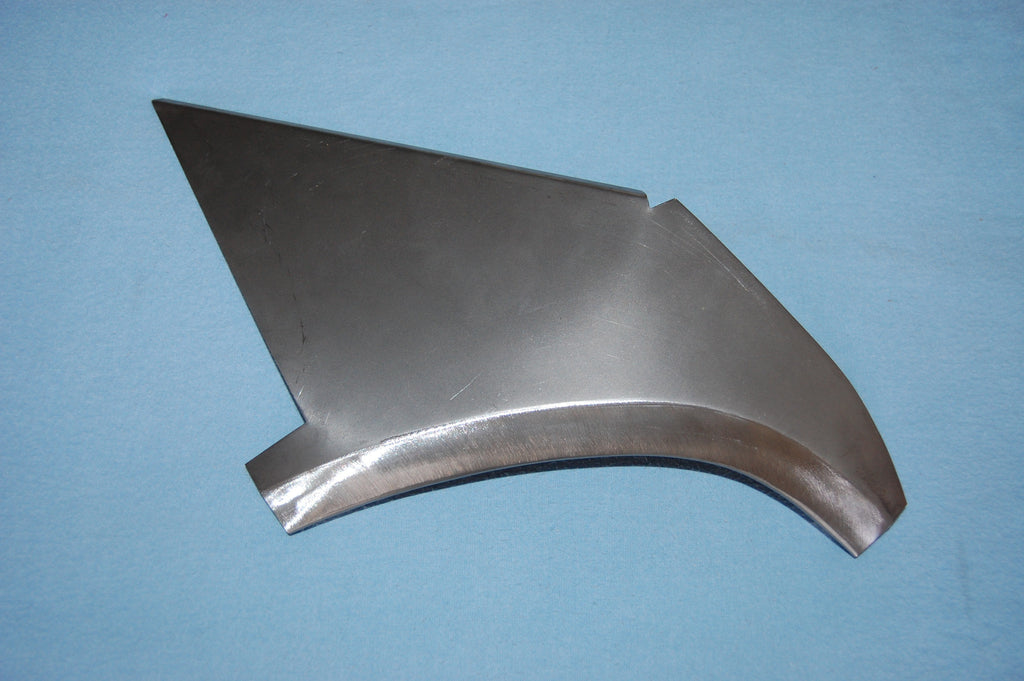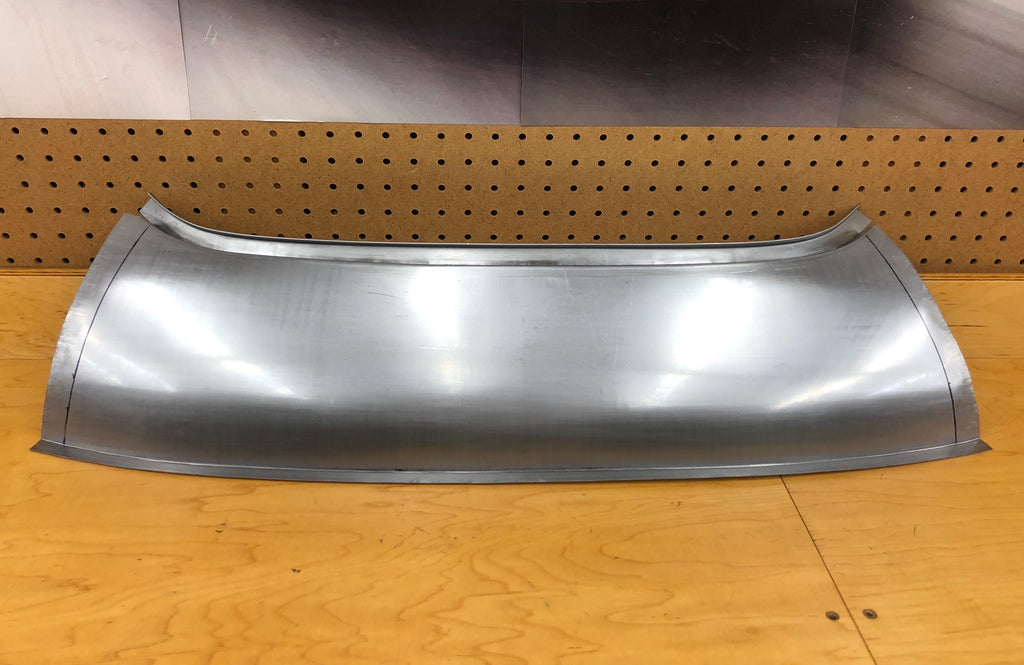Yes – it’s been several weeks since the last entry – the truth is that I’m just too busy bui8lding E-Types to write about it!
I have been working on 1 car to finish it up for 2 weeks straight – 12+ hours a day – they are always a nightmare in the end. I PROMISE LOTS of photos – SOON!
In the meantime, here is a straight cut-and-paste of an email I just sent to a customer about brake options. I got about 2 or 3 sentences into it and realized that I should do this once and then have it for good, and so I tried to get it all in there.
I had alot of braking adventures as a kid – killed one brand new bonnet compliments of a tired 3.8 braking system – and eventually learned more about E-Type brakes than a person who isn’t racing one should know. So here is EVERYTHING I know about it – plus some opinions – enjoy!
There are several ways to upgrade the brakes on a 3.8 (or any…) E-Type:
My personal experience was that with stock 3.8 brakes, full pedal slowed the car down. With stock Series 1 4.2 booster brakes, full pedal slowed the car down faster. With Stock Series 2 brakes, full pedal locked up the wheels at anything below 60 mph.
NOTE: Series 1 and Series 2 wheels have different center hubs, but are otherwise EXACTLY the same in all dimensions. Any braking system that fits within a Series 2 wheel will fit within a Series 1 wheel, and vice-versa.
NOTE: Series 1 wheel cylinders have the seal on the piston, and the bore is what wears and is re-sleeved. They also have this crazy little rod in there that is supposed to be a reaction valve to pull them back – which often gets bent when they are taken apart – IF YOU BEND THIS ROD – FORGET IT – you will NEVER get it straight enough to keep the cylinder from hanging up!!! Series 2 calipers, on the other hand, are the opposite (and like all modern calipers) they have the seal in the bore, and the piston is what wears and is just replaced. What’s nice is that these are SO EASY to rebuild. You pull them apart, sandblast and plate the housings, then rebuild with a new seal kit and all new, STAINLESS pistons!
Option A – Early 4.2 – pretend it is a 65 with the “crossover” pedal box – all Series 1 cars have the same wheel cylinders, but with the 4.2 cars, they went to the single master cylinder with booster. During 1965, they stuck with the 3.8-style firewall, but used a special brake box that fits the 3.8 hole, but uses the 4.2 master cylinder. This was the hot setup for 3.8’s 25 years ago and what my 63 has – but you have to find the 1965 pedal box… Then you mount the booster under it on the 4.2-style x-panel.
NOTE: You CAN modify the stock 3.8 pedal box to 1965 pedal box specs – I have done it successfully. However, it’s a nightmare – lots of fabrication that has to be just right – and at the very least you need a 1965 box to use as a pattern. Don’t try it – you are literally taking your life in your hands…
Option B – Standard 4.2 – modify the firewall to have the 4.2 pedal box mount. I make the plates for both the 3.8 and 4.2 pedal boxes that go right over the x-panel.. You could cut out the 3.8 version, and replace it with the 4.2 version, then find and mount the 4.2 style pedal box – which is somewhat easier to find, a little cleaner, and does get the master cylinder a little farther back and hence, away from the heat a bit (see comment below…). The pedal box mounting plate does have a stiffener under it that is also different for the 4.2, but I could make that for you too – it’s on my list to pattern. Then you mount the booster under it on the 4.2-style x-panel.
Option C – Series 2 – Do everything in Option A or B, PLUS replace the wheel cylinders front and rear with Series 2 calipers – which are simpler, a better (more modern) design, easier to work on, and – wait for it – take bigger pads that are much easier to replace – and there are probably better pads available in this style too. This is what I ran on my car as a kid with LOTS of horsepower – the Series 2 system is what all 3 Donovan racers use. The catch with this is that to use the Series 2 front calipers, you need Series 2 front uprights and steering arms – the mounting bolt spacing on Series 1 calipers is 3 inches, but Series 2 is 3.5 inches…
Option D – Series 2 with 3″ mount front calipers – some smart people with alot of time on their hands have figured out which cars came with similar calipers but with a 3″ mounting bolt spacing that the Series 1 uprights have. The Series 2 front caliper is a weird 3-piston caliper – one big one on one side and two smaller ones on the other. There are 4-piston calipers out there that bolt right up to the Series 1 uprights – some were on Volvo’s I think – I used them once, the only issue is that they have 2 inlets and three bleeders – we pumped into both inlets and they worked great, but there are better options with one inlet and one bleeder…
Option E – Series 3 (V12) – the only difference between Series 2 and Series 3 is that on the front calipers, where they bolt together (these calipers are made in two halves that bolt together…), there are spacers about 1/2″ wide to accommodate a vented disc. In this case, you DO need a special wheel – you could use a standard V-12 wheel, but I don’t think it will clear the bonnet when turning and that is why the V-12 bonnets are flared. By the way, I can make Series 1 front wings with the V-12 flares out of V-12 wings if anyone is interested… Now – I was TOLD by a friend 20 years ago that he figured this out and got it all within the Series 1 wheel by milling .100 off the hat of the rotor – not sure about that, but what I do know is that they did figure it out, and machining of the parts like this was the answer…
Option “F” – aftermarket – I am NOT a fan… I guess there are probably great kits out there, but after a lifetime of restoration and racing, I have learned that factory stuff is overbuilt, and beats out the aftermarket stuff for strength and longevity. There are some lightweight options – Wilwood, etc., but I have also heard “not good” things about Wilwood calipers under heavy use. When you hold a Wilwood caliper in your hand, you think 2 things right off, “Damn, this is LIGHT! But you know, it seems kind of weak…” These calipers were originally designed for drag racing, and not the heavy repeated use of road racing. Bottom line is, if the stock stuff works on the Donovan 61 car, it is good enough for you. They run the stock Series 2 calipers, split apart on vented rotors like the V-12’s (but they do that in the rear too), and I think they may have had special mounting brackets to put in a bigger diameter rotor – but the calipers themselves are bone stock. And the way that thing decelerates at the end of a straight is ridiculous!
Problem 1: The 4.2 master cylinder has a plastic reaction valve on the end of it that is very cheap. Over time, and especially with high underhood heat, the plastic breaks down and eventually, this little thimble-shaped cap falls off the end. When that happens, it activates the booster and the brakes come on full. I had mine safety-wired on after this happened several times, but I also had ALOT of underhood heat – nobody but professionals had coated headers back then…
Problem 2: The 4.2 booster has a stepped bore – the very back inch of it is a wider bore with a seal in it that is a separate hydraulic area from the main bore. This second bore is almost ALWAYS overlooked when these are re-sleeved, but it gets the most wear. Over time, this bore wears, and the vacuum sucks the fluid into the vacuum tank of the booster. This is why that is FULL of brake fluid when you remove it in almost every E-Type restoration…
Problem 3: If you use the Series 2 system like I did, and drive like I did, you will warp the hell out of your front rotors… For this reason alone, I suggest splitting the front calipers and getting vented rotors like a V-12…


